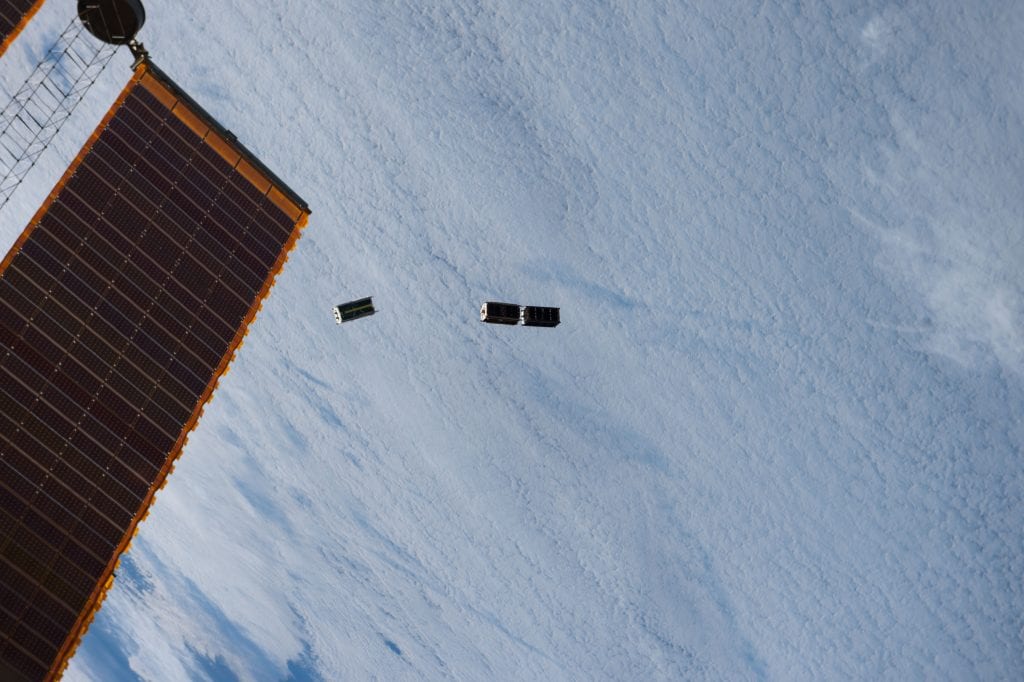UCLSat: a collaboration out of this world
By uclqjle, on 26 July 2017
 UCLSat, a satellite designed and built by UCL engineers and scientists, was launched in June from the Satish Dhawan Space Centre in India as part of an international mission called QB50.
UCLSat, a satellite designed and built by UCL engineers and scientists, was launched in June from the Satish Dhawan Space Centre in India as part of an international mission called QB50.
The satellite is now 507km up and going overhead three times a day (six times actually, but three times in working hours).
On the current status of the satellite, Dr Rob Wicks (UCL Institute for Risk & Disaster Reduction) said: “We have our ground station here and we listen to it every time it goes overhead and we get data back. It’s working well at the moment, touch wood.”
Funded by the European Union, the QB50 mission has involved the launch of a network of CubeSats built by universities all over the world to collectively study the physics and chemistry of the middle and lower thermosphere of the Earth for the first time.
The mission has fostered a lot of collaboration across universities, science institutes and industry partners. For example, two universities in Australia help UCL listen for radio contact with UCLSat, and UCL does the same for them.
“Australian National University and Adelaide University are both helping us out with radio contact with our satellite,” explained Dr Wicks. “And that’s kind of on just a friendly, reciprocal basis. We listen to theirs and they listen to ours. There’s no official paperwork to do with that, but we are just collaborating as friendly institutions.
“It’s one of the great things about QB50 – you have these 50 institutions around the world that are now sort of semi-friendly and talk to one another about radios and satellites and things like that.”
A resounding success
UCL has been involved in the mission since 2011 and, in addition to working on UCLSat, UCL Mullard Space Science Laboratory (MSSL) engineers also produced hardware for 13 of the other satellites.
The mission has been a resounding success. The failure rate for CubeSats is usually 40%, but the CubeSats launched during the QB50 mission is half that, at 20%.
Speaking of UCL’s achievements and pioneering vision for the project, Dr Wicks added: “UCL should be extremely happy that it has been a leader in this field of big CubeSat missions. The whole mission right from the beginning has been a struggle, because space agencies and a lot of the science community were very negative about CubeSats. They said ‘they are too small and too unrealisable – it’s a waste of time and a waste of money to try and do science with them’.
“I think we are basically proving them wrong – we can use them for education, we can use them for training and we can use them for science. We can keep them cheap. We expect that 20% will fail, but that is better than 40%, and we are going to get real useful scientific data out of it. It is only really now that the science community is waking up to this.”
Student support
UCL students have been heavily involved in the project. Masters students worked with MSSL in the early stages of the project on the design of the satellite and on simulations of the upper atmosphere, among others.
Théophile Brochant de Villiers, who worked on the CubeSat while studying for his MSc in Space Science and Engineering at UCL, is now a technician in the MSSL Department of Space & Climate Physics.
He said: “We were a small team working on UCLSat. This meant there was a lot of work and a lot of tasks that I wasn’t necessarily trained for. So I learned everything on the job; this required being proactive, and not being afraid to seek out help around the lab. I got to know a lot of amazing scientists and engineers which I still regularly interact and work with. This is what I’m most proud of.”
- Read a Q&A with Théophile about his work on UCLSat here.
- 36 CubeSats have been launched into orbit in 2017. Their positions, data, and detailed information can be found on the QB50 Display, Processing and Archiving Center.
- Find more news from the UCL Faculty of Mathematical & Physical Sciences here.
 Close
Close

